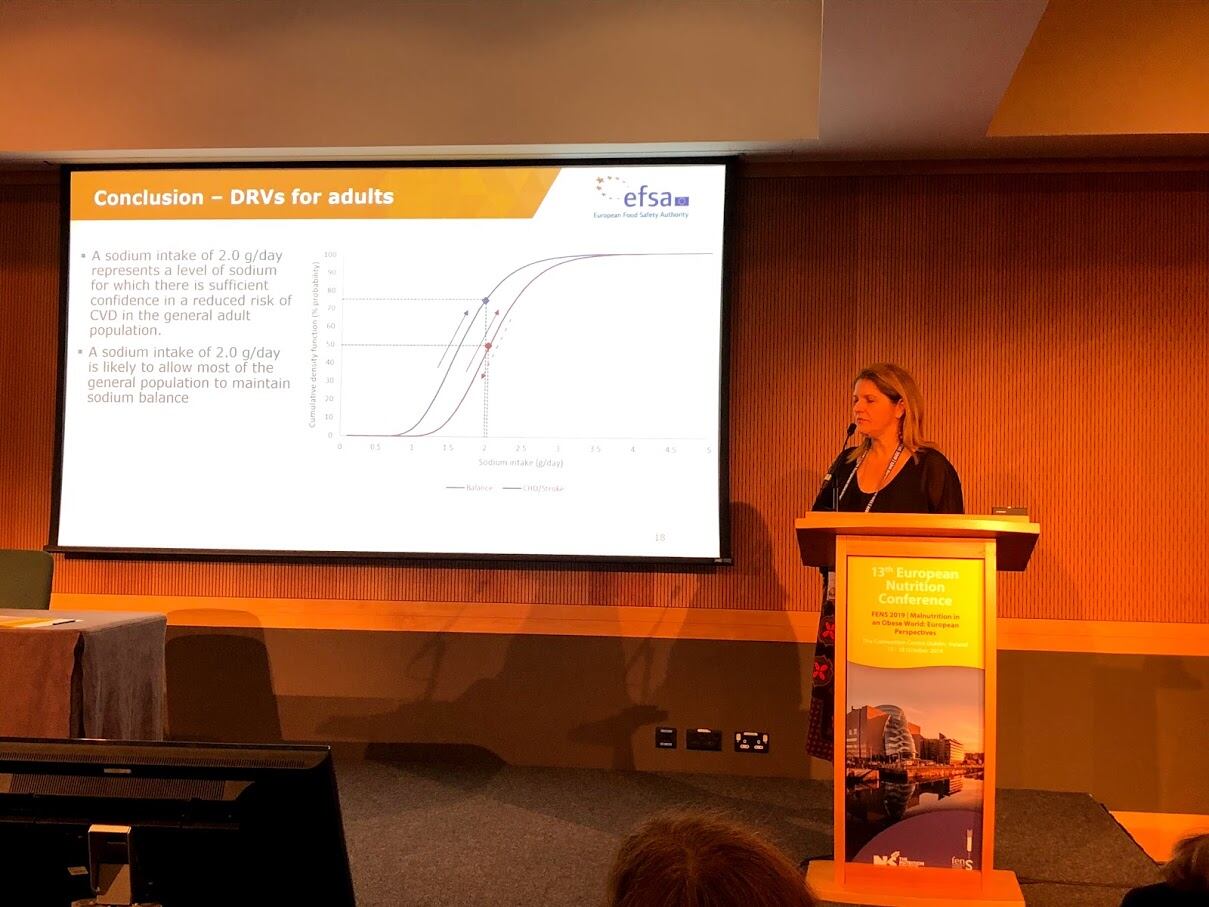But what did it take for The European Food Safety Agency (EFSA) to reach these conclusions in the face of complex physiological interplay between several nutrients?
Speaking at The Federation of European Nutrition Societies (FENS) conference, Androniki Naska, vice-chair of EFSA’s nutrition, novel food and food allergens panel, gave a unique insight to the lengths her team went to in determining safe and adequate levels.
“The question was immediate,” she began. “Is there an adequate and safe range of intake for sodium?”
“What we had to contend with was the ongoing controversies surrounding current salt reduction policies as well as the polarisation of scientific literature on sodium intakes and health outcomes."
Proponents vs. opponents
“There was also the conclusions of systemic reviews on the topic, which were diverging and reflected two schools of thought.
“The proponents supporting the theory that high sodium intake increased blood pressure thus increasing the risk of cerebro-cardiovascular events. Therefore, salt reduction policies will produce major public health benefits.
“The opponents refer to the relationship between sodium intake and clinical outcomes that are ‘U’ or ‘J-shaped.’
“The harms associated with low sodium intakes may mitigate any potential benefits of blood pressure reduction."
Speaking at FENS, held this year in Dublin Ireland, Dr Naska then detailed the opportunity EFSA had in formulating their own understanding of the matter.
Here, the Panel applied an approach that PROmoted METHods for Evidence Use in Scientific Assessments or Prometheus focusing on the uncertainty analysis of the whole process.
Balance studies
Along with Prometheus, metabolic and ‘balance’ studies on sodium consumption and excretion from urine, sweat and faeces were used to better understand the systemic mechanisms employed to maintain sodium balance.
“Results from the three studies in adults and one in adolescents suggested the range of sodium intake was between 1.5 grams (g) and 4.9g/day in adults and between 1.31 and 3.95 g/day in adolescents,” said Dr Naska, an associate professor of hygiene and epidemiology at school of medicine, National and Kapodistrian University of Athens.
“In addition, we discovered research that fond rhythmical variations in the sodium body pool independent of sodium intake.
“We also observed the response of the sympathetic nervous system and the renin-angiotensin-aldosterone system that conserved sodium evident at excretion below 100 millimols (mmol) per 24 hours.
“We concluded that these studies could not be used to determine sodium requirements and could only be used to inform about the levels of sodium intake adequate to maintain a null balance.
In discussing the use of relevant data and the integration of evidence available Dr Naska said an average requirement (AR) and a population reference intake (PRI) could not be established for sodium, because the distribution of the requirement cannot be determined.
“What we did have were the balance and metabolic studies that were used to assess levels of sodium adequate enough to maintain a null balance .
“We also had studies that delved further into the relationship between sodium and blood pressure or CVD risk. We also had research that looked into the levels of sodium associated with a reduced risk of chronic disease.
EKE process
The Panel moved on to a formal Expert Knowledge Elicitation (EKE) process, a method that supports the experts in making evidence-based judgements about a quantity of interest.
“What is elicited is a distribution of our judgements about the range of possible values. It also expresses the relative likelihood of the different values,” explained Dr Naska.
“The method is useful for eliminating psychological bias. It is also very well structured and this improves the rigour of reasoning as well as result in a clear and unambiguous expression of uncertainty.”
Writing in its official journal, EFSA’s Panel on Nutrition, Novel Foods and Food Allergens assigned a value of 2.0 grams (g) sodium per day as a safe and adequate intake for the general EU adult population.
The Panel also concluded that 1.1 g/day of sodium for children aged 1–3 years is adequate as is 1.3 g/day for children aged 4–6 years, 1.7 g/day for children aged 7–10 years and 2.0 g/day for children aged 11–17 years, respectively.
For infants aged 7–11 months, an Adequate Intake (AI) of 0.2 g/day is proposed based on the estimated sodium intake in exclusively breast-fed infants aged 0–6 months.




